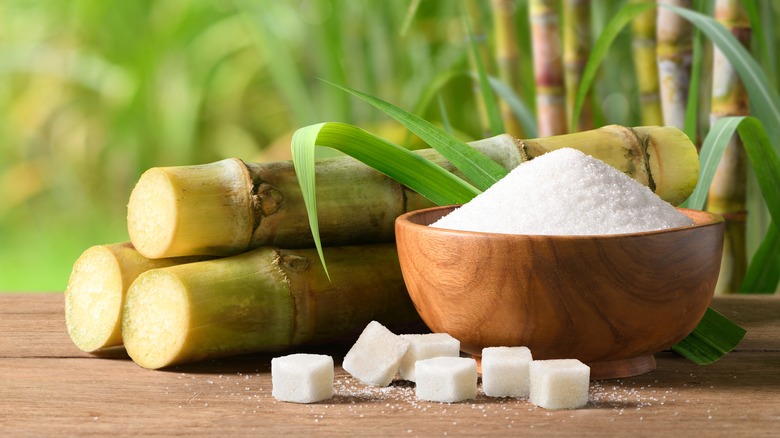Examining beet sugar vs cane sugar reveals distinctions in economic factors and distribution.
Examining beet sugar vs cane sugar reveals distinctions in economic factors and distribution.
Blog Article
Discover the Uses and Benefits of Beet Sugar Vs Cane Sugar in Your Daily Diet
Checking out the distinctive top qualities of beet and cane sugar reveals even more than just their sweetening capabilities; it highlights their one-of-a-kind effect on health and wellness and cookeries. Beet sugar, known for its subtle taste, is usually preferred in fragile treats, whereas cane sugar, with its tip of molasses, adds richness to robust dishes. Each type holds its own dietary account and glycemic implications, inviting a deeper understanding of their functions in a balanced diet and lasting usage practices.
Origin and Production Procedures of Beet and Cane Sugar

The distinct climates and dirt types needed for expanding sugar beetroots and sugarcane add to distinctions in their growing practices and geographical circulation, influencing the business economics and sustainability of their production. beet sugar vs cane sugar.
Nutritional Contrast Between Beet Sugar and Cane Sugar
Regardless of stemming from various plants, beet sugar and cane sugar are nutritionally really comparable, both largely being composed of sucrose. Each supplies concerning 4 calories per gram, converting to approximately 16 calories per teaspoon. Structurally, both sugars are made up of approximately 99.95% sucrose, with minimal quantities of various other substances like dampness and trace element, which do not dramatically modify their nutritional accounts.

Ultimately, when selecting in between beet sugar and cane sugar based upon nutritional web content alone, both deal the same advantages and downsides as they are basically types of the very same molecule-- sucrose, providing quick power without various other nutrients.
Impact on Health And Wellness: Glycemic Index and Caloric Material
Exploring further right into the impacts of beet sugar and cane sugar on wellness, it is very important to consider their glycemic index and caloric content. Both sugars are categorized as sucrose, which is composed of sugar and fructose. This composition leads them to have a similar influence on blood sugar level degrees. The glycemic index (GI) of both beet and cane sugar is around 65, classifying them as high-GI foods, which can create fast spikes in blood sugar levels. This is an important element for individuals handling diabetes or those attempting to support their power degrees throughout the read day.
Each kind of sugar contains around 4 calories per gram, making their caloric material equivalent. For those keeping an eye on caloric consumption, especially when managing weight or metabolic health and wellness conditions, recognizing this equivalence is vital (beet sugar vs cane sugar). Extreme consumption of any type of high-calorie, high-GI food can add to health problems such as obesity, heart condition, and insulin resistance.
Environmental and Economic Factors To Consider of Sugar Manufacturing
Beyond wellness effects, review the manufacturing of beet and cane sugar additionally elevates considerable environmental and economic issues. Sugar beet farming has a tendency to need cooler environments and has a lower geographical footprint contrasted to sugar cane, which grows in exotic areas. Both plants are intensive in terms of water use and land profession, possibly leading to logging and water scarcity. Financially, the worldwide sugar market is extremely unpredictable, influenced by changes in worldwide profession policies and subsidies. Numerous countries incentivize sugar production via economic support, skewing market costs and affecting small farmers adversely.
In addition, the use of pesticides and plant foods in both beet and cane sugar cultivation can lead to dirt deterioration and contamination, additional impacting biodiversity and neighborhood water bodies (beet sugar vs cane sugar). The choice in between cultivating sugar beet or cane often depends upon local ecological conditions and economic elements, making the sustainability of sugar manufacturing a complicated issue
Culinary Applications and Taste Distinctions
While the environmental and economic aspects of sugar production are without a doubt considerable, the option between beet and cane sugar likewise affects cooking applications and taste profiles. Beet sugar, obtained from the sugar beet plant, is known for its extremely neutral preference.
Walking stick sugar, extracted from sugarcane, commonly keeps molasses traces, which present a distinct splendor and depth. This small molasses taste improves the intricacy of baked products, sauces, and marinades. It is especially preferred in items where a sugar undertone is preferred, such as hop over to here in brownies or gingerbread. Moreover, the minor variant in moisture content in between beet and cane sugar can influence the texture and uniformity of dishes, making cane sugar a favored option for specific dishes that take advantage of its unique residential or commercial properties.

Conclusion
In verdict, both beet and cane sugar have unique beginnings and production procedures, providing similar dietary accounts with small distinctions in salt content and flavor. While their influence on health and wellness, especially relating to glycemic index and calories, is comparable, the selection in between them commonly comes down to environmental, economic aspects, and certain culinary needs. Recognizing these elements can assist customers in making educated choices that straighten with their wellness objectives and flavor preferences.
Report this page